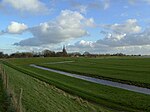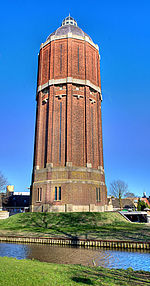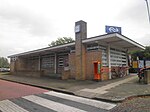Bangert, North Holland
MedemblikPages with non-numeric formatnum argumentsPopulated places in North Holland

Bangert is a neighbourhood of Andijk and former village in northwest Netherlands, located in Medemblik, North Holland. Throughout its history Bangert has been competing with surrounding municipalities (esp. Andijk and Kerkbuurt) for land and population. For instance, in 1667 neighbouring Kerkbuurt acquired a church and began pulling away some of Bangert's inhabitants. In the 19th and 20th centuries, poverty combined with landgrabbing by Wervershoof also diminished the village.Andijk annexed Bangert, Kerkbuurt and Munnikij which are now considered neighbourhoods of Andijk. In 2011, it became part of the Medemblik municipality.
Excerpt from the Wikipedia article Bangert, North Holland (License: CC BY-SA 3.0, Authors, Images).Bangert, North Holland
Dwarsland, Medemblik
Geographical coordinates (GPS) Address Nearby Places Show on map
Geographical coordinates (GPS)
| Latitude | Longitude |
|---|---|
| N 52.736033333333 ° | E 5.1780833333333 ° |
Address
Dwarsland 6
1619 GG Medemblik
North Holland, Netherlands
Open on Google Maps









